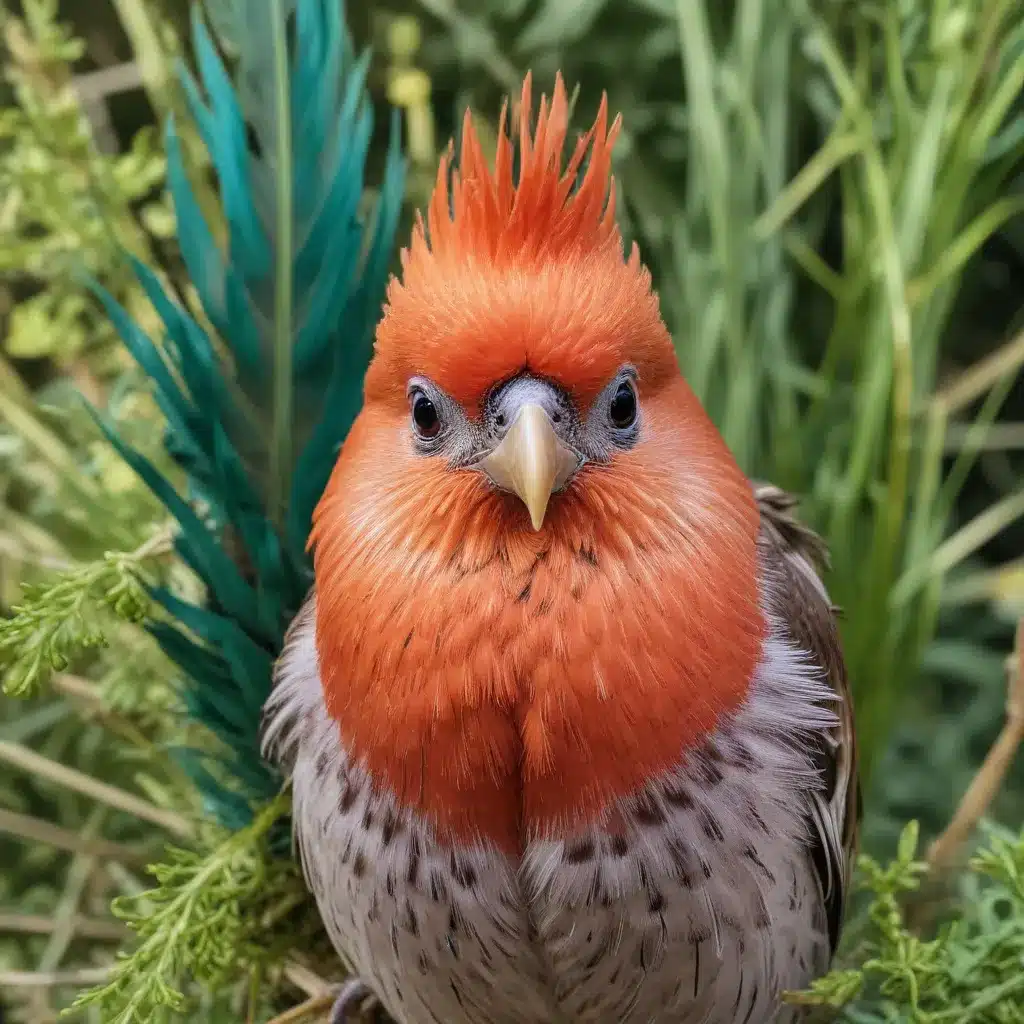
As an experienced avian caretaker and expert in the field, I’m delighted to share my insights on optimizing the nutritional needs of our feathered companions. Crafting a balanced, species-appropriate diet is essential for the overall health and wellbeing of our avian friends.
Avian Anatomy and Physiology
To truly understand the unique dietary requirements of our birds, we must first explore their intricate anatomy and physiology. The digestive system of birds is quite different from that of mammals, with adaptations tailored to their diverse feeding habits and nutritional needs.
Digestive System of Birds
Birds possess a specialized gastrointestinal tract designed for efficient nutrient absorption. Their beak, crop, and gizzard work in tandem to grind and process a wide range of food items, from seeds and nuts to fruits and greens. The intestines of birds are relatively short compared to their body size, allowing for rapid transit of nutrients. This efficient system enables birds to extract the maximum benefit from their diverse diet.
Nutrient Requirements for Feather Health
Feathers are a true marvel of avian biology, serving as a bird’s first line of defense against the elements. Optimal feather health is dependent on a well-balanced diet that provides the essential macro- and micronutrients. Proteins, fats, and carbohydrates are crucial for feather growth and maintenance, while vitamins and minerals like vitamin A, zinc, and calcium play pivotal roles in feather structure and pigmentation.
Metabolic Considerations for Avian Species
Each avian species has unique metabolic requirements based on their natural habitat, activity levels, and evolutionary adaptations. For instance, the highly active African Grey Parrot has a faster metabolism compared to a more sedentary cockatiel. Understanding these species-specific needs is key to crafting a diet that supports their overall physiological functions.
Avian Dietary Profiles
In the wild, birds have evolved to thrive on a diverse array of natural food sources, each offering a unique nutritional profile tailored to their species-specific requirements.
Macro- and Micronutrient Composition
Wild birds typically consume a balanced diet rich in proteins, fats, carbohydrates, vitamins, and minerals. The ratios of these macronutrients and the availability of essential micronutrients can vary greatly depending on the bird’s habitat, foraging habits, and seasonal food sources.
Species-Specific Feeding Habits
Parrots, like the African Grey, are known to be selective foragers, preferring a varied diet of raw seeds, fruits, greens, and occasionally insects. In contrast, finches and canaries may focus more on grains and small seeds. Understanding these distinct feeding behaviors is crucial when designing appropriate diets for our captive birds.
Foraging Behaviors and Dietary Adaptations
In their natural environments, birds actively forage and expend considerable energy in search of their food. This active lifestyle influences their nutritional needs, as they require diets that provide sustained energy and support their high metabolic rates. Captive birds, however, often lack this opportunity for natural foraging, which can impact their overall health if not addressed through proper diet and enrichment.
Nutritional Challenges in Captive Birds
While we strive to provide our beloved avian companions with the best possible care, captive environments can present unique nutritional challenges that must be addressed to ensure their long-term wellbeing.
Nutritional Deficiencies and Imbalances
Relying solely on commercially available seed mixes or even vitamin-coated seeds can lead to nutrient deficiencies and imbalances in our captive birds. These deficiencies can manifest in various health issues, including feather disorders, weakened immune systems, and metabolic diseases.
Feather-Related Disorders
One of the most visible indicators of nutritional imbalances in birds is the presence of feather stress bars. These unsightly lines across the feathers can signify underlying stress, dietary deficiencies, or other health concerns that require prompt attention.
Dietary Supplementation Strategies
To address nutritional deficiencies and support optimal feather health, strategic dietary supplementation can be a game-changer. Carefully selected supplements, such as probiotics, omega-3 fatty acids, and targeted vitamin and mineral blends, can help bridge the gap between captive diets and the nutritional requirements of our avian friends.
Optimization of Avian Diets
Crafting a well-balanced and species-appropriate diet for our feathered companions is a delicate art, but one that is essential for their overall wellbeing. Let’s explore some key strategies for optimizing avian nutrition.
Formulation of Balanced Diets
A foundation of high-quality pelleted diets, combined with a variety of fresh fruits, vegetables, herbs, and occasional treats, can provide a comprehensive and balanced nutritional profile for our birds. Consulting with avian veterinarians and reputable bird nutrition experts can help us tailor these diets to the unique needs of each species.
Enhancing Nutrient Bioavailability
Simply providing the right nutrients is not enough; we must also ensure that our birds can effectively absorb and utilize these essential compounds. Factors such as food processing, nutrient interactions, and the bird’s individual digestive capabilities can all impact nutrient bioavailability. Incorporating minimally processed, whole-food ingredients and considering species-specific digestive adaptations can help maximize the nutritional value of our birds’ diets.
Innovative Feeding Approaches
To stimulate our birds’ natural foraging behaviors and provide enrichment, we can explore creative feeding strategies. Scatter-feeding, puzzle feeders, and hiding food items throughout the enclosure can encourage natural foraging behaviors and keep our feathered friends mentally and physically engaged.
By delving into the intricacies of avian anatomy, physiology, and natural dietary profiles, we can develop a deep appreciation for the unique nutritional needs of our beloved birds. Through a holistic approach that addresses both the macro- and micronutrient requirements, as well as species-specific adaptations, we can optimize the diets of our captive birds and ensure their overall health and wellbeing.
At Mika Birds Farm, we are committed to providing our avian companions with the best possible care, including a balanced and species-appropriate nutrition plan. By embracing the principles of avian nutrition outlined in this article, we can help our feathered friends thrive, ensuring they live long, vibrant, and enriched lives.


